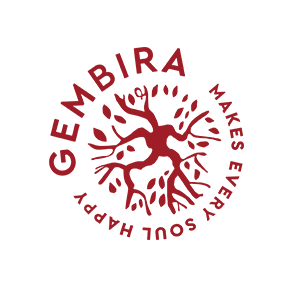Suriname is one of the smallest countries in South America yet it is a true melting pot of cultures. Descendants of Indian, Chinese, Javanese, Jews, Dutch, the indigenous people, and many more all live in peace and harmony with one another. As such, it can’t be ignored that these people shared their own culture with one another and created a mix that makes what Suriname is now.
Therefore, you can’t find just one type of Surinamese recipe, but we will try out some of them!
Though Suriname has many foods originating from other cultures, it also has its own traditional foods, Pepre Watra is one of them. The food’s name translates to “pepper water” in their lingua franca Sranan Tongo, but it is more than simple pepper and water!
It is a light fish soup with onions, tomatoes, celery, madame jeanette or you may leave it out if you can’t handle spice, allspice, bouillon cubes, black pepper, and salt. Don’t forget to wash fish with lemon to remove the fishy smell! Surinamese usually use white fish like pike or cod. Let all the ingredients simmer and you’ll have a Surinamese fish soup ready to eat!
From soup to something fried, Nasi is what Surinamese call fried rice. This Surinamese version of fried rice often uses leftover rice from yesterday, finely chopped onions, trassi (a shrimp paste!), garlic, sweet soy sauce, soy sauce, a handful of finely chopped parsley or celery leaves, and side dishes like eggs or pickles or fried plantains!
Surinamese Nasi was introduced by the Javanese people, and later on the Chinese had their own fried rice recipe to share with, and the Surinamese themselves contributed with the taste. Therefore, there is no one correct recipe because some may add in brown sugar, or laos, or lemongrass, there are a lot of Nasi variants out there!
Here comes one of Surinamese’s national dishes, Pom. Often served for parties like a birthday party, pom is of Creole or Jewish origin. Originally, the Portuguese-Jewish used potatoes for Pom, but it was not found in Suriname, so eventually they used the root of a local ingredient called tajer.
Pom is a mix of chicken or meat, pomtajer, and citrus juice. The meat is often cut into cubes and mixed with spices such as black pepper, nutmeg, salt, and a citrus juice to marinate it, then cook it. After that, you need the grated pomtajer to be mixed with paprika powder, salt, and pepper in another bowl. Some people cook the pomtajer mix, some don’t, but in the end the chicken is layered with pomtajer and baked in a preheated oven.
You may even use cassava, or taro, or even potatoes to substitute pomtajer. Though often eaten with rice or vegetables, pom can be a filling eaten with bread like a sandwich called “pom broodje”!
Goedangan is a traditional Surinamese salad that is said to be similar to Gado-gado, an Indonesian traditional salad, yet goedangan uses coconut cream as its dressing instead of peanut sauce! Incredibly easy to make, goedangan uses shredded cabbage, mung bean sprouts, green beans, and some boiled eggs!
For the dressing, there is coconut cream, plain yogurt, brown sugar, ground coriander, chili pepper, lime, and some salt. Blanch your veggies, mix the dressing ingredients, adjust to taste, then drizzle the dressing on top of the salad. Add in some coconut flakes if you want, and now goedangan is ready to be served and eaten!
Ghugri, originated from India and made its way to Suriname, is a popular snack made out of chickpeas! Chickpeas are soaked overnight to make ghugri, but there are recipes out there that use canned chickpeas instead for convenience.
Use a large frying pan or skillet to fry some chopped onions, chopped garlic, masala, fresh pepper or pepper powder of choice, salt, and sugar. Once the mixture begins to brown, add the chickpeas in and continue to stir until they become slightly crispy.
Serve ghugri in individual bowls, or finish it by yourself!
Now this one is truly interesting, Tjauw Min (chow mein) is a stir fried noodle from the Chinese, but don’t be fooled, because Suriname has its own creative twist even for chow mein!
Typical chow mein uses chinese egg noodles that is then stir fried on a pan with chicken or peeled shrimp, onion, garlic, oyster sauce, stock cube, ginger powder, sesame oil, five spice, sweet soy sauce, and salty soy sauce, it does seem like a regular chow mein. But wait! Some Surinamese tjauw min recipes use spaghetti as the noodle! Would you like to try that out?
A true melting pot of cultures living in harmony with one another, there is no one correct way to make a Surinamese dish because each culture contributed their own taste to the food of Suriname. Even this barely scratches the surface of Surinamese’s intriguing food culture!
So let’s get to know about it more, starting by asking a Surinamese friend and sharing your culture with one another!


